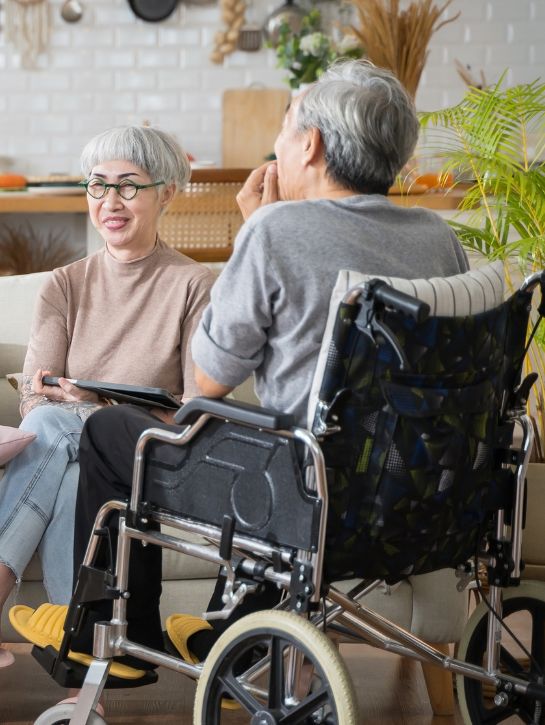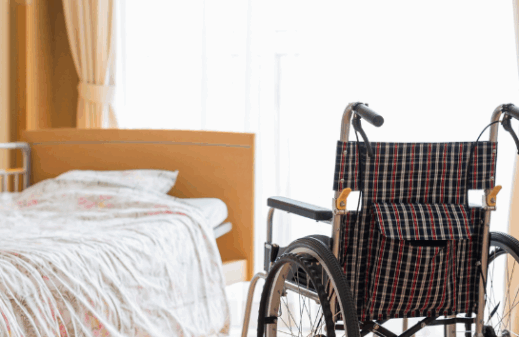The United States is experiencing an epidemic of loneliness and isolation, and seniors are particularly vulnerable. Loneliness in senior housing facilities can have a significant impact on both mental and physical health, but residential care facilities can take steps to help residents overcome loneliness.
The Loneliness Epidemic
The U.S. Surgeon General recently issued an advisory on the nation’s epidemic of loneliness and isolation. The advisory warns that a lack of social connection can impact individuals, communities, and society, and social isolation among older adults results in an estimated $6.7 billion in excess Medicare spending every year.
If you’re wondering how social isolation can result in billions of dollars of extra healthcare spending, the CDC says loneliness and social isolation can put older people at risk for dementia and other serious medical issues. Research has found that social isolation is associated with a 50% increased risk of dementia, while poor social relationships are associated with a 29% increased risk of heart disease and a 32% increased risk of stroke. Furthermore, loneliness is associated with elevated rates of depression, anxiety and suicide.
Loneliness and Social Isolation in Senior Care Facilities
Seniors may experience social isolation as they retire from work and leave the coworkers and social network that comes with most jobs. Adult children often move away, and spouses and other loved ones may pass. Then, when seniors move into senior care facilities, they leave their old home, and that often involves leaving behind some close friends and neighbors. Physical health and mobility issues may also make it more difficult for them to engage in the activities they once enjoyed.
All of this can contribute to social isolation in senior living facilities. According to research published in the National Library of Medicine, 19% to 29% of community-dwelling older adults are lonely.
For leaders at senior living organizations, this is a problem as well as an opportunity. By helping your residents overcome loneliness, you can support better health while also making your facility a more joyous place that attracts workers, residents and families.
1. Acknowledge Loneliness
It’s counter-intuitive that seniors often experience loneliness and social isolation while residing in senior communities. By their very nature, communities are supposed to be characterized by social interaction. However, in many cases, seniors still become isolated even when they are surrounded by great people. Recognizing this, educating your team, and intentionally addressing the potential for loneliness with both residents and their family members is the first step toward reducing potential feelings of isolation at your facility.
- Teach your team to watch for signs of loneliness and to engage in meaningful conversations with residents.
- Consider hosting a guest speaker on loneliness to educate residents, families and employees about the risk of loneliness on a quarterly basis.
- Build loneliness discussions into new resident/family orientation. Ask family members how you can help seniors stay connected and gather contact information of loved ones so you can help them reach out. (See technology section below for more on this.)
- Take a closer look at a typical resident’s “journey.” When they move in, how do you introduce them to others and integrate them into daily life? Are there opportunities for improvement?
- Consider creating a buddy system so experienced residents can help new residents navigate existing social circles.
- Create a method of checking in with residents so you can identify and address signs of loneliness quickly.
2. Engage Residents in Activities
Most senior care facilities already organize activities that encourage social interaction. The challenge is that shy, lonely or depressed residents may choose not to attend planned events. Consider how to make events accessible to all, accounting for different preferences and physical abilities. Ask about residents’ interests when they first move in and personally invite them to attend activities that match their interests. A personal invitation from a “buddy” may also inspire the attendance of a resident who wouldn’t come otherwise. Here are a few ideas:
- Board Game Night: Set a time and provide some games for your residents to play. You might need to give quick tutorials on how to play them.
- Book Club: A book club can be a great way to spark conversation. For residents with vision or reading challenges, suggest audiobooks or e-readers that enable large fonts.
- Art Class: Provide some art supplies and host an art night or host a guided painting experience with a partner such as Painting with a Twist.
- Movie Night: To increase the level of social interaction, encourage everyone to discuss the movie after it ends. Get the conversion started with some questions about what they liked or didn’t like.
- Karaoke: Many people love to sing. Encourage them to share their talents.
- Show & Tell or Share Your Hobby: Ask residents if they’d like to personally teach a class on a topic of their choice. Invite a family member or team member to support them.
3. Reach Out to the Local Community
In addition to trying to increase social connections within your senior living community, also think about ways you can increase connections with the surrounding community.
- Invite youth volunteers. Local schools and youth clubs may be interested in visiting your facility. Although one-time events can bring joy to the community, having recurring events in which the same volunteers return is a great way to build friendships across generations.
- Plan day trips. If you never left your home, you might start to feel lonely and isolated quickly. Your residents likely feel the same. You can host outings to local museums, zoos, galleries and shows.
4. Teach Tech Savviness
Sometimes it just isn’t possible for seniors to connect with their friends and family in person. This may be due to health problems, or it may be because their loved ones live far away. Either way, technology can help.
- Teach your residents how to use common tech tools to stay in touch with others, including video conferencing tools, text messaging and email.
- Make sure your residents have access to devices. Some of your residents might not own smart phones or computers, so you may want to have some devices available to all residents and assign a team member to proactively engage them in outreach. You may need to involve residents’ family members in providing contact information and scheduling video calls.
- Don’t forget about cybersecurity. Many scams target the elderly, so teach residents how to avoid online scams and viruses.
By combating loneliness in senior housing communities, you can support better health. It’s just one aspect of risk management for senior living facilities. Tangram provides insurance for adult residential care facilities through the Personal Care & Assisted Living Insurance Center (PCALIC). Learn more.
Article provided by Tangram Insurance Services.




